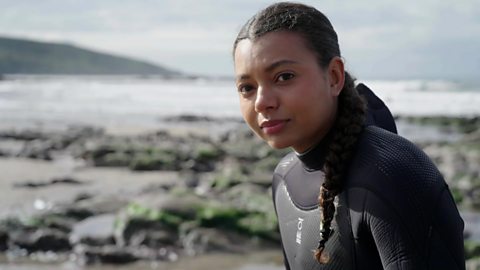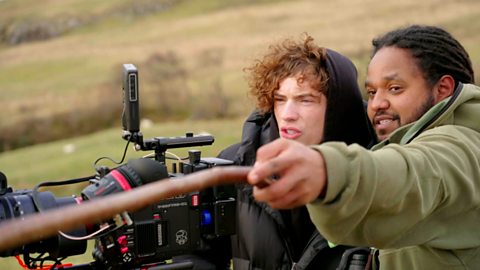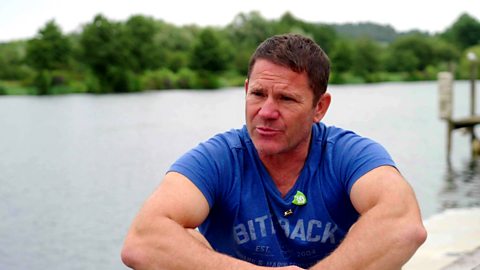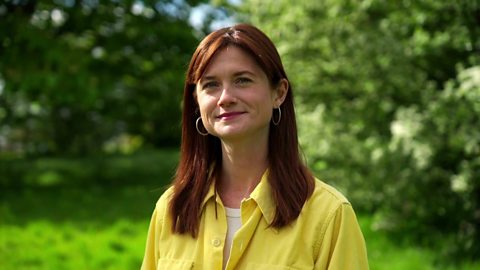Clean Our Air With Bonnie Wright
Plants, animals and humans. To live, we all need the same thing. The air around us and the oxygen it carries. But when our air is polluted, we damage one of our most valuable resources. One person who feels strongly about itis Harry Potter star and environmental activist, Bonnie Wright. I’m catching up with her in Central London. Nice wheels. Let’s go. Let's go. We’re hopping aboard a rickshaw to sample the air in a busy city centre. So thanks for joining me on a little bicycle ride. I thought we'd just cycle around and think about air pollution.
Obviously, when we're in a city like London. Yeah, what can pollute our air? So we have cars around us. We have, you know, big industry that, you know, say, buildings or factories and things like that. But luckily, there are also solutions that we can look to that can help us make our air more healthy to breathe. So air pollution: bad. But what we can do: good. What can we do? What can we do? Well, lots of things. On an individual level, like at home, day to day, maybe limit your use of driving, instead opt for public transport or cycling or walking or wheeling to school or work. And that is exactly what one group of BP fans are doing every day.
[ALL] Hello! These guys. from a school near Manchester, are trying to reduce the number of car journeys and have formed what they call a walking bus. The walking school bus is good because it doesn't cause as much pollution and it helps the environment. I like walking to school because it's good for the environment and if it's a Monday you can catch up with what your friend's been doing. Walking to school every day, helps the environment. And it keeps you fit and healthy. And it gets your brain into gear, so you’re ready for the day ahead. Sometimes you don't always feel good about it, but we walk in every weather. Now Bonnie what else can we do to help our air? Well, we’re very lucky, we can learn a lot from nature, and nature can do a lot for us. So we're going to head over to a park and learn an amazing hack on helping us clean our air. Ooh, I love that, a nature hack. Yeah. That hack is the super air cleaning power of trees.
Bonnie is taking me to see a project called The Tiny Forest where local school kids are helping plant trees to create a miniature woodland. So these trees look a little bit like twigs. They are quite small, but they will mature into beautiful, larger trees. Even just this area in the first five years will actually attract about 500 different species of animals and other plant life, creating a really biodiverse, little tiny forest. So even within our own cities, we can create these incredible, thriving green spaces that can help filter our air. Tiny pores in leaves help trees absorb pollution and carbon dioxide from the air, storing it in their trunks. In return they release oxygen helping clean the air and combat climate change. This tiny forest isn't going to be able to do everything, is it? No, sadly not. That would be great if it could solve all of our problems. But what we can do here, I think we can learn how do we sort of take these lessons of of planting here and integrate this into our daily lives? That could be if you have space to plant something outside or indoor plants are incredible way as well to filter the air we breathe. Well, that's two trees in the ground. Just another 598 left to plant.
Hello. You look really hard at work. What are you doing here?[ALL] We're planting trees. So cool. And why is it so important that you're planting trees? Trees help us breathe oxygen. That’s right. How do you feel when you’re planting the trees, knowing you're making a difference? Excited. Now, these trees look teeny tiny. But what are they going to look like when they're all grown up?[ALL] Big! Woah! Yeah they're going to look massive, aren’t they? And they will help our local community and our air. I can't wait until this place becomes a fully-fledged forest. And there it is. The tiny forest is on its way. Yeah, it looks amazing and in about 2 to 3 years, the trees will probably start getting a bit taller than me. Thank you so much Bonnie for helping out today.
To enter the Blue Peter Earthshot competition, you'll need to come up with an idea to protect the planet. You’ll have to live in the UK and be aged between 5 and 15 years old. Here's the cool bit. The five winners will each attend a very special VIP filming experience with Blue Peter and Earthshot. Remember to ask your grown up permission to enter and read the competition rules and privacy notice. Head to the Blue Peter website to apply online or to download a form, fill out and post. And your entries must arrive to us by 5 PM on Monday the 28th of October. Good luck! I can't wait to see what ideas you come up with. So good luck entering the competition.
Teacher notes
When our air is polluted, we damage one of our most valuable resources but there is much we can do to clean our air, such as reducing our use of fossil fuels, using cleaner energy sources, and leaving the car at home. We can also plant more trees to help absorb carbon and other pollutants from the atmosphere.
Supports learning about the air pollution, travel and transport, and forests.
These teacher notes outline activities for you to try with your class and get pupils thinking about environmental challenges. The Blue Peter Earthshot competition is now closed for entries, for more info head over to the Blue Peter website.
Classroom ideas
Talk about clean air
Help pupils join the conversation by discussing and creating your own glossary of key terms together:
Atmosphere - the mixture of gases around the world.
Biodiversity - the variety of life on Earth.
Industry - economic activity that often involves processing raw materials and making things in factoriespollution the presence in an environment of a substance or thing with harmful or poisonous effects.
How do we pollute our atmosphere?
Summarise with pupils some ways in which we pollute our air, to check their understanding. Air pollution is essentially caused by burning things: when we burn wood, crops, coal or oil we put tiny unwanted particles into the air, as well as contributing emissions to climate change. We need to find ways to produce energy without burning things, use a lot less polluting energy from fossil fuels and find ways to prevent polluting particles reaching the atmosphere. The good news is that in modern cities our air is much healthier than it was years ago. We are on the right track.
How do you get to school?
Survey with pupils how they get to school. Younger pupils could make pictograms, and older pupils could create graphs, to show modes of transport used. Use digital maps with pupils to investigate routes and distances travelled from their homes as well as the availability of public transport and safe walking routes. Discuss how polluting different forms of transport are, and challenge pupils to identify ways to reduce pollution from their own journeys. Pupils could use their findings to make recommendations for safe walking routes to school.
The walking bus
If you don’t already have one, why not start a walking bus that runs once a month, once a week or every day? Pupils could use their research to create a newsletter for parents and carers with a map of proposed safe routes and some reasons why it’s a good thing to walk to school. Reasons might include having fresh air, exercise, and time to talk with your friends.
Plant a tiny forest
In their first five years, a tiny forest of trees might attract 500 different species of animals and other plant life. They can also absorb carbon dioxide and pollutants as well as producing oxygen. Ask pupils to create annotated posters of a chosen species of tree e.g. an Oak, and give reasons why we need them, such as: increase biodiversity, absorb carbon dioxide and pollution, give shade, shelter and food, beautiful to look at etc. Pupils could include an annotated sketch of a leaf as seen through a magnifying glass. Using a map of the school grounds, pupils could then carry out fieldwork to identify where new trees might be planted and create an action plan to do this.
Curriculum Links
England:
English, Mathematics, Science, Geography, Art and design
Northern Ireland:
Language and Literacy, Mathematics and Numeracy, The World Around Us, The Arts, Personal Development and Mutual Understanding
Scotland:
Literacy and English, Numeracy and mathematics, Expressive Arts, Sciences, Social Studies, Health and Well Being
Wales:
Languages, Literacy and Communication, Mathematics and Numeracy, Science and Technology, Humanities, Health and Well Being





